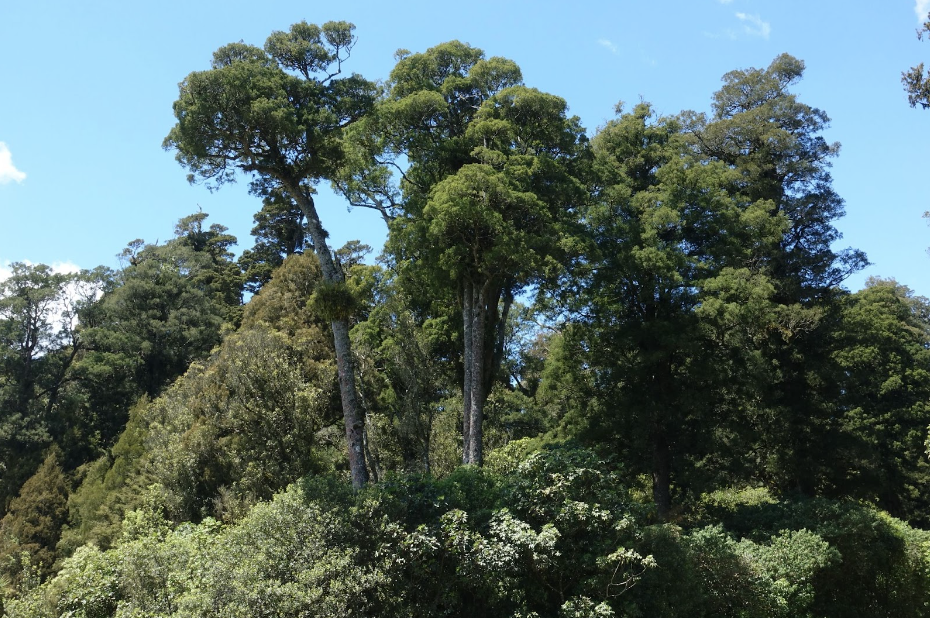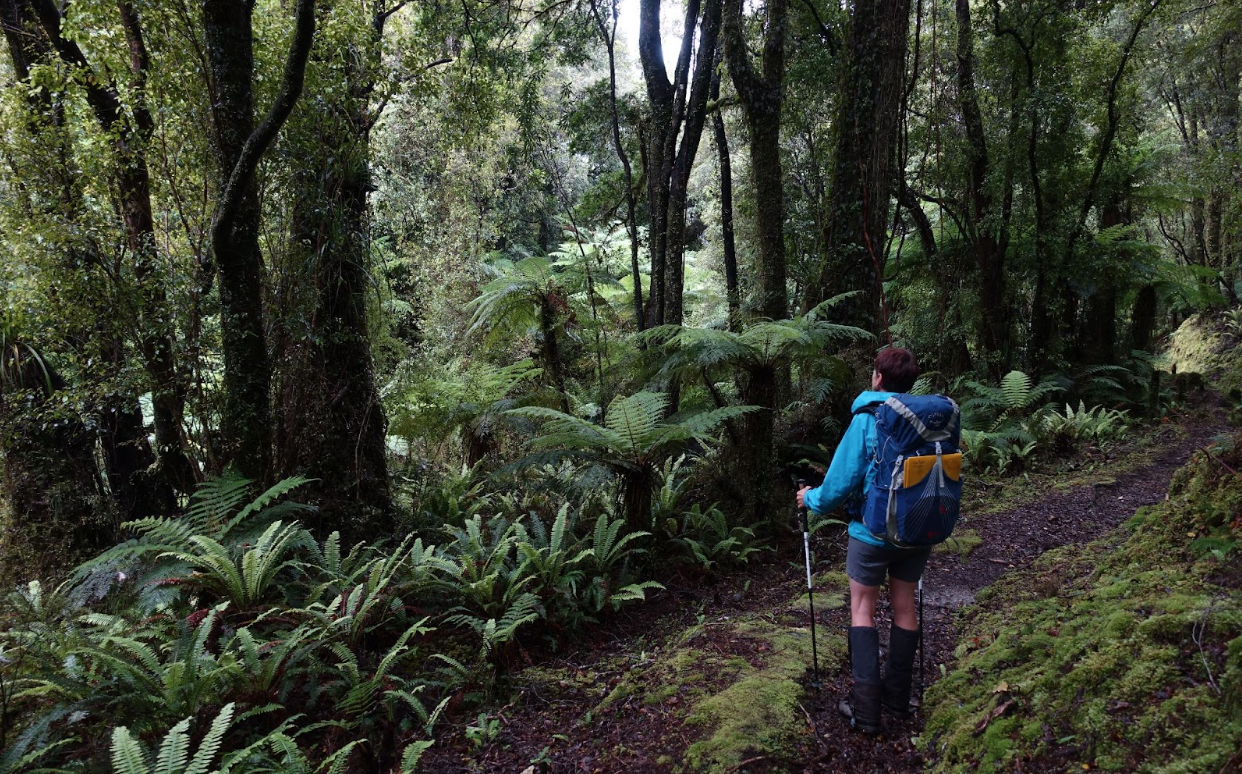Our native forests are temperate rainforests that are perfectly adapted to our mild and moist environments. Some of the ancestors of tōtara, kauri, rimu, tawhai, tawa, pūriri, rātā and other trees have been here since we were part of Gondwana over 60 million years ago, while the ancestors of others have reached our shores from Australia or Southeast Asia subsequently. But all our native forests and the rich diversity of plants, animals, fungi and microbes that live in them, are the products of millions of years of evolution here in Aotearoa. These forests and their biodiversity make our country unique – they occur nowhere else in the world.
Top Header Image: Beech forest interior, South Westland.
©DavidNorton
Native temperate rainforests once dominated Aotearoa, covering 82% of the land area. It was only in the high mountains, on recently disturbed sites, in wet areas or in some of the driest parts of Marlborough and Otago that native forests would have been replaced by other native vegetation – wetlands, shrublands and grasslands.
With successive waves of human settlement, the area of native forests has contracted to the extent that mature native forests now only occupy 24% of the land area and are mainly restricted to the colder and wetter parts of Aotearoa. But they are still unique and incredibly precious.
In comparison, exotic trees and plantations have a very short history in Aotearoa, less than 200 years, and they are not and can never be a substitute for native forests. Yes, exotic trees do have important roles, especially as a source of sustainable construction timber and for biofuels, but they can never replace native forests or the values they provide us with.
”If we are to truly realise the pure advantages of our diverse native rainforests, today and in the future, then we need to think differently.
Our diverse native forests provide us with so much:
- They are habitat for a multitude of other native species that could not survive without them. Imagine if we could not hear the call of kiwi, kākā or ruru, see the bright colours of mistletoe or rātā flowers or the verdant understorey of ferns, admire the exquisite beauty of orchids and fungi, or marvel at the incredible diversity of our invertebrates from weevils and wetas to snails and giant earthworms.
- Our native rainforests are a key part of the water cycle, both purifying and regulating its flow. Native forests play a critical role in retaining water high in catchments, slowing the flow into lower areas thus reducing flood peaks.
- Native forests also help retain sediment, both through reducing erosion and through trapping sediment that comes from higher up slopes.
- Our native forests sequester large amounts of atmospheric CO2 and act as long-term carbon stores both in the trees and in the soil. While Aotearoa’s temperate rainforests are not able to sequester carbon at the rate that an exotic tree crop can over the first few decades of its life, they store substantial amounts of carbon longer term. In fact, our native temperate rainforests are amongst the most carbon dense forests in the world.
- Native forests also provide significant income through tourism, whether as framing for our stunning mountains and rivers or as a place to reconnect with nature. And they have much potential to supply sustainably harvested products like honey and timber.
- Native forests help to define our national character. From the mighty kauri forests of Waipoua and the dense podocarp forests of Whiranaki, to the extensive tawhai/beech forests of the south. Native forests define and enrich our cultural identity. Tāne is central to most whakapapa, defining Māori relationships right back to the beginning of time. And what would Aotearoa be without the yellow of kōwhai heralding the start of spring, the red blaze of pōhutukawa and rātā in mid-summer, and kahikatea laden with orange fruit in autumn?

Dense podocarp dominated forest, Pureora
©David Norton
While native forests are impacted by storms, this is part of their natural ecology and damage is not uniform because of mixed ages and species. Diverse native forests will regenerate after such events, but there is no evidence that exotic tree crops planted for carbon can do this. Our native forests are also less vulnerable to fire than exotic plantations. Yes of course they will burn, but they are nowhere near as flammable as has been clearly shown in recent fires (e.g. at Lake Ōhau and Craigieburn). And unlike exotic trees, they are not themselves a source of weeds, especially of wilding pines.
If we are to truly realise the pure advantages of our diverse native rainforests, today and in the future, then we need to think differently. We need to shift from short-term economic considerations (whether they be about timber or carbon) to thinking long-term and intergenerationally, we need to think about ecosystems as much as about species, and we need to place people at the center of the forest narrative. We urgently need to reframe forest policy to one that is focused on nature-based solutions if we are to address the many environmental challenges we are facing and native forests need to be at the core of this.
Looking after our existing native forests and establishing more native forests as proposed in Recloaking Papatūānuku will only increase the benefits that native forests can provide us with – as habitat for diverse native biodiversity, building resilience into our landscapes, sequestering carbon, providing alternative income streams for communities and most importantly allowing us to better connect with our whenua.
David Norton is a contributor to the Recloaking Papatūānuku initiative, an urgent and ambitious programme to restore our indigenous forests, building on the Ō Tātou Ngahere partnership with Tāne’s Tree Trust. Find out more about the initiative here and sign up to join the movement.




Leave a comment